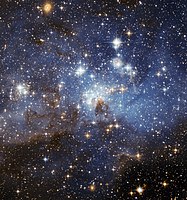
Atmospheric oxygenation driven by unsteady growth of the continental sedimentary reservoir
Sign Up to like & getrecommendations! Published in 2017 at "Earth and Planetary Science Letters"
DOI: 10.1016/j.epsl.2016.12.012
Abstract: Abstract Atmospheric oxygen concentration has increased over Earth history, from ∼0 before 2.5 billion years ago to its present-day concentration of 21%. The initial rise in pO2 approximately 2.3 billion years ago required oxygenic photosynthesis,… read more here.
Keywords: atmospheric oxygen; oxygenation; oxygenation driven; atmospheric oxygenation ... See more keywords

A probabilistic case for a large missing carbon sink on Mars after 3.5 billion years ago
Sign Up to like & getrecommendations! Published in 2020 at "Earth and Planetary Science Letters"
DOI: 10.1016/j.epsl.2019.116001
Abstract: Abstract Mars has a thin (6 mbar) CO2 atmosphere currently. There is strong evidence for paleolakes and rivers formed by warm climates on Mars, including after 3.5 billion years (Ga) ago, which indicates that a… read more here.
Keywords: years ago; co2; probabilistic case; billion years ... See more keywords

Dark-energy mapper will reconstruct 11 billion years of cosmic history
Sign Up to like & getrecommendations! Published in 2019 at "Nature"
DOI: 10.1038/d41586-019-02424-8
Abstract: A telescope in Arizona will conduct the largest spectroscopic survey of galaxies. A telescope in Arizona will conduct the largest spectroscopic survey of galaxies. read more here.
Keywords: mapper reconstruct; reconstruct billion; dark energy; billion years ... See more keywords

The formation of solar-neighbourhood stars in two generations separated by 5 billion years
Sign Up to like & getrecommendations! Published in 2018 at "Nature"
DOI: 10.1038/s41586-018-0329-2
Abstract: The chemical compositions of stars encode those of the gas from which they formed, providing important clues regarding the formation histories of galaxies. A powerful diagnostic is the abundance of α elements (O, Mg, Si,… read more here.
Keywords: interstellar medium; type supernovae; gas; formation ... See more keywords

The gravitationally unstable gas disk of a starburst galaxy 12 billion years ago
Sign Up to like & getrecommendations! Published in 2018 at "Nature"
DOI: 10.1038/s41586-018-0443-1
Abstract: Galaxies in the early Universe that are bright at submillimetre wavelengths (submillimetre-bright galaxies) are forming stars at a rate roughly 1,000 times higher than the Milky Way. A large fraction of the new stars form… read more here.
Keywords: gas disk; molecular gas; disk; gravitationally unstable ... See more keywords

Thermal and impact histories of 25143 Itokawa recorded in Hayabusa particles
Sign Up to like & getrecommendations! Published in 2018 at "Scientific Reports"
DOI: 10.1038/s41598-018-30192-4
Abstract: Understanding the origin and evolution of near-Earth asteroids (NEAs) is an issue of scientific interest and practical importance because NEAs are potentially hazardous to the Earth. However, when and how NEAs formed and their evolutionary… read more here.
Keywords: impact; thermal impact; histories 25143; impact histories ... See more keywords

The First Billion Years project: Finding infant globular clusters at z = 6
Sign Up to like & getrecommendations! Published in 2020 at "Astronomy and Astrophysics"
DOI: 10.1051/0004-6361/202037884
Abstract: We explored a suite of high-resolution cosmological simulations from the First Billion Years Project (FiBY) at $z \geq 6$. All substructures within the simulations have been identified with the SUBFIND algorithm. From our analysis, two… read more here.
Keywords: first billion; years project; relation; billion years ... See more keywords

Structure and function of a compound eye, more than half a billion years old
Sign Up to like & getrecommendations! Published in 2017 at "Proceedings of the National Academy of Sciences of the United States of America"
DOI: 10.1073/pnas.1716824114
Abstract: Significance An exceptionally well-preserved arthropod fossil from near the base of the lower Cambrian shows the internal sensory structures of a compound eye, more than half a billion years old. The trilobite to which it… read more here.
Keywords: years old; half billion; compound eye; billion years ... See more keywords

Four billion years of microbial terpenome evolution.
Sign Up to like & getrecommendations! Published in 2023 at "FEMS microbiology reviews"
DOI: 10.1093/femsre/fuad008
Abstract: Terpenoids, also known as isoprenoids, are the largest and most diverse class of organic compounds in nature and are involved in many membrane-associated cellular processes, including membrane organization, electron transport chain, cell signaling, and phototrophy.… read more here.
Keywords: years microbial; four billion; billion years; membrane ... See more keywords

Four direct measurements of the fine-structure constant 13 billion years ago
Sign Up to like & getrecommendations! Published in 2020 at "Science Advances"
DOI: 10.1126/sciadv.aay9672
Abstract: Fine-structure constant measurements 13 Ga ago, plus lower redshift data, test space-time variation of a fundamental constant. Observations of the redshift z = 7.085 quasar J1120+0641 are used to search for variations of the fine… read more here.
Keywords: structure constant; billion years; fine structure; four direct ... See more keywords

Impact and habitability scenarios for early Mars revisited based on a 4.45-Ga shocked zircon in regolith breccia
Sign Up to like & getrecommendations! Published in 2022 at "Science Advances"
DOI: 10.1126/sciadv.abl7497
Abstract: After formation of a primordial crust, early impacts influenced when habitable conditions may have occurred on Mars. Martian meteorite Northwest Africa (NWA) 7034 is a regolith breccia that contains remnants of the earliest Martian crust.… read more here.
Keywords: zircon; billion years; nwa 7034; regolith breccia ... See more keywords